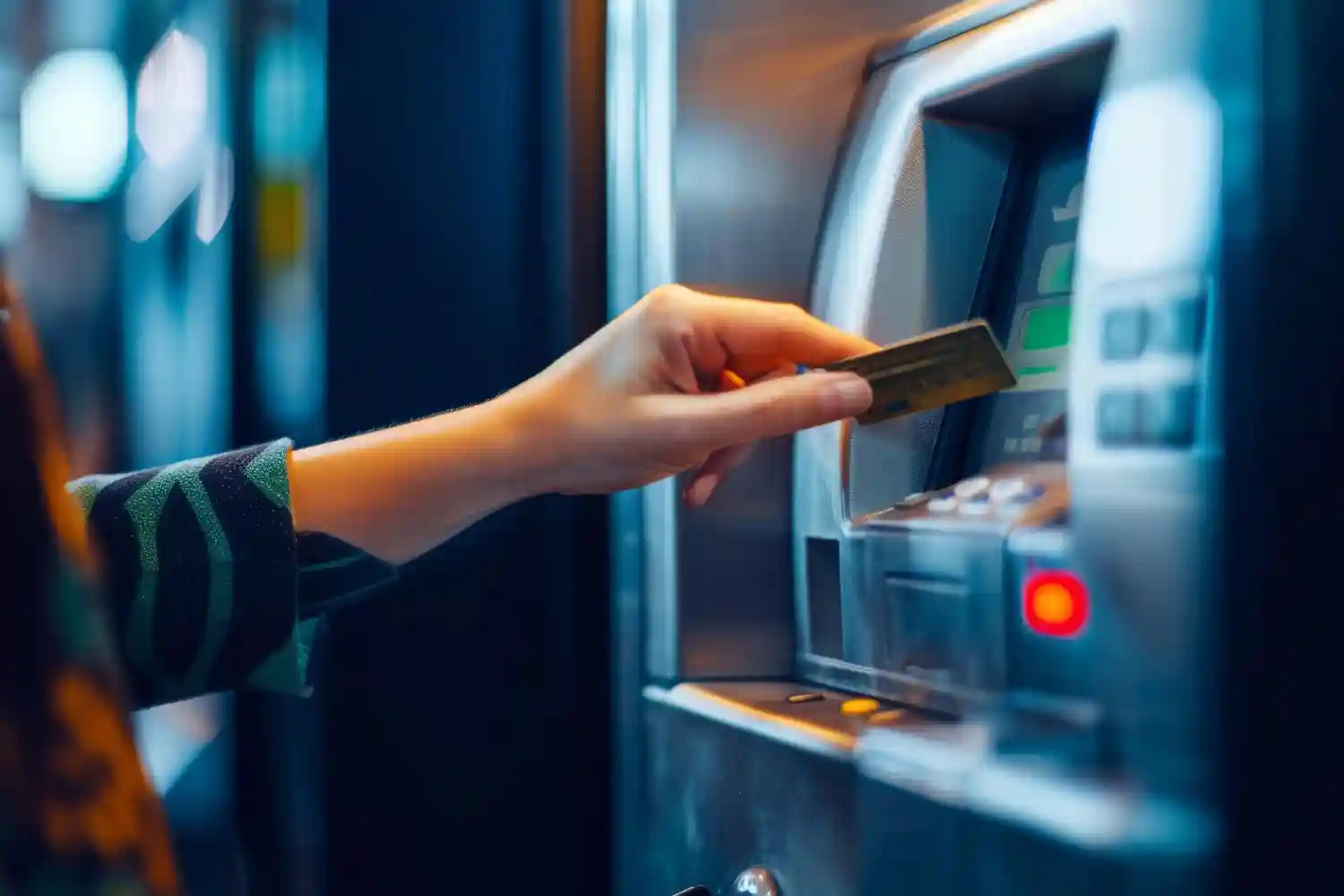How to Start an ATM Business and Earn Passive Income
Ever wondered how some people make money without working a 9 to 5? Starting an ATM business might be the answer you’re looking for. You place a machine, people use it, and you earn a fee every time they withdraw cash. It’s simple, low-maintenance, and brings in real passive income.
With thousands of ATMs operating across the U.S., this side hustle is turning into a solid income stream for small business owners. Search interest in “how to start an ATM business” is climbing fast, and it’s easy to see why. The startup costs are reasonable, and one good location can generate steady monthly earnings. If you’re curious about turning this idea into your own cash-flow system, keep reading. We’re going to break it all down in plain English.
How does the ATM Machine Business Work
The ATM machine business is simple. You place a machine at a good location. When people withdraw cash, they pay a small surcharge fee. That fee goes to you. It might seem small at first, but it builds up quickly with daily use.
Who pays the surcharge fee
It’s the end user. Not the store owner or landlord. People are often willing to pay a couple of dollars for convenience, especially when they need cash fast.
What’s your role as the owner
You decide how hands-on you want to be.
You can
- Buy and install the ATM
- Load it with cash yourself
- Monitor it for uptime and restocks
Or you can outsource some of that. Some owners hire a service to refill the machine or partner with a processor who handles the backend.
What does it cost to run
There are two types of costs in this business.
Fixed costs
- Buying the ATM machine, usually around 2,000 to 3,000 dollars
Recurring costs
- Small monthly fees for internet connection
- Paper rolls for receipts
- Processing charges per transaction
Compared to your potential earnings from surcharge fees, these costs are low. If your ATM is in a busy spot, it can pay for itself in just a few months.
Step-by-Step Guide to Start Your ATM Setup

Starting your ATM setup might feel overwhelming at first. But at Founder Startup we break it down into simple steps so you know exactly what to do from researching the market to running a successful machine.
Here’s a step-by-step guide to help you start the right way..
Step 1: Research the Market
- Before jumping in, take time to understand the local demand.
- Are there already a lot of ATMs in your area?
- Which businesses use them the most?
- Look for places that still rely on cash payments like bars, salons, gas stations, and small shops.
- This research helps you avoid bad locations and gives you a solid plan before spending a dollar.
Step 2: Form Your Business
- You’ll need to create a legal business entity.
- Most ATM owners go with an LLC for liability protection.
- Apply for an EIN from the IRS.
- Open a business bank account to buy machines, deposit income, and handle taxes.
- This is the core of ATM business legal requirements and keeps everything clean and professional.
Step 3: Get Licenses and Insurance
- Check your state’s specific rules for ATM operations.
- Some areas may not require a license, but others do.
- Don’t skip business liability insurance to protect yourself in case of accidents or theft.
- Look into ATM business license requirements and insurance for business before moving forward.
Step 4: Choose ATM Machine Type
- Decide whether to buy or lease your ATM machine.
- Many owners prefer to buy new machines for long-term savings and fewer issues.
- Used machines cost less upfront but may need more maintenance.
- Leasing lowers upfront risk but gives less control.
- Search for buy ATM machine USA and best ATM machine to compare options.
- Make sure the machine is EMV-compliant and ADA-friendly.
Step 5: Pick a Profitable Location
- Location is everything in this business.
- Choose places with steady foot traffic and cash-reliant customers.
- Late-night spots, cash-only businesses, or areas with limited banking access are good options.
- Also consider safety and lighting.
- Focus on the best ATM locations and profitable ATM spots that fit your goals.
Step 6: Sign an Agreement with the Property Owner
- Get permission in writing before installing your ATM.
- Create a contract that covers revenue sharing, service responsibilities, and duration.
- Offer a percentage of each transaction to the property owner as a goodwill gesture.
- Look for ATM location contract templates and study smart ATM placement strategies.
Step 7: Install the Machine and Software
- Once the location and contract are set, install the ATM.
- Connect it to the internet with a wireless router or phone line.
- Set up the software, load branding if needed, and test everything.
- Make sure it complies with processing networks.
- Use an ATM setup guide when you install ATM machine hardware.
Step 8: Cash Loading and Maintenance Plan
- Decide if you want to load cash yourself or hire armored truck services.
- Loading cash yourself saves money but requires regular visits.
- Armored truck services offer safety and convenience, especially for busy machines.
- Schedule regular cleaning, paper roll changes, and software updates.
- This keeps your machine running smoothly with proper ATM maintenance and ATM cash loading.
Step 9: Monitor and Optimize
- Use your processor’s dashboard to track transactions and spot problems early.
- Review monthly reports to identify low-traffic days or chances to increase fees.
- Consider upgrading or relocating machines if performance drops.
- Use ATM performance tracking to keep your business profitable and growing.
Profit Breakdown With Realistic Example

Let’s break down the money side of starting an ATM business. I’ll show you the real costs, what you’ll spend each month, and how much you can expect to earn. This will help you see if it’s a good fit for you.
Startup Costs
- Buying a new ATM costs about 2,500 dollars
- Installation can add a few hundred dollars more
- Licenses and permits may have fees depending on your state or city
Ongoing Costs
- Cash loading, either done by you or a hired service
- Repairs and maintenance to keep the machine running smoothly
- Possible rent or location fees if the property owner requires it
Monthly Revenue
- One ATM can earn between 200 and 1,000 dollars per month
- Five machines could bring in 1,000 to 5,000 dollars each month
Return on Investment (ROI)
- Most machines pay for themselves in a few months
- ROI usually happens within six to twelve months
- After that, most income becomes pure profit
How Much Can You Make From an ATM?
- Earnings depend on location and number of machines
- With good spots and multiple machines, profits can be steady and grow over time
Top 8 Mistakes to Avoid in the ATM Business

Starting your business can be great, but there are some common mistakes you want to avoid. These slip-ups can cost you time and money.
1. Choosing Poor Locations
No matter how good your machine is, if it’s in a spot with little traffic or people who don’t use cash, you won’t make much. Find busy places with cash-paying customers.
2. Overpaying for Machines
Some sellers charge way too much for ATMs. Do your homework and compare prices. Buying used machines can save money but check their condition carefully.
3. No Contract or a Weak Contract
Always get a solid written agreement with the property owner. It protects you and sets clear rules about fees and responsibilities.
4. Ignoring Compliance Rules
ATMs must follow certain laws and standards. Don’t skip this or you might face fines or have to remove your machine.
5. Not Tracking Usage
Keep an eye on your ATM’s activity. Without tracking, you won’t know if it’s making money or having problems.
6. No Insurance
Skipping insurance is risky. If your machine gets damaged or stolen, insurance helps cover the costs.
7. Underestimating Cash Needs
You need enough cash in your machine to meet demand. Running out means lost sales and unhappy customers.
8. Neglecting Service and Repairs
Machines need regular checks and maintenance. Ignoring this can cause breakdowns and lost income.
Avoiding these common mistakes sets you up for success. What mistakes do you think catch new owners the most?
Choosing the Right Location
- Look for places with lots of foot traffic
- Pick stores and businesses where people often need cash
- Choose spots that mostly deal with cash payments to get more users
- Avoid areas that feel unsafe or have very few people
- Stay away from locations with low security to prevent damage or theft
- Skip places where people rarely use cash
- Good examples of profitable ATM locations are nightclubs, gas stations, and convenience stores
- When deciding where to place ATM machines, focus on busy, cash-friendly spots to boost your earnings
Legal Compliance Checklist
- Ensure your ATM meets ADA ATM compliance so people with disabilities can use it easily
- Follow EMV and PCI DSS ATM compliance standards to protect card data and prevent fraud
- Use EMV chip readers and secure software for safe transactions
- Check your state’s specific ATM legal requirements and get any needed licenses or permits
- Remember some states like California and Texas have their own rules for ATM operators
Best Tools, Vendors, and Software
- Trusted ATM machine vendors in the USA
Genmega — known for reliable, user-friendly machines
Triton — offers affordable options great for small businesses
Hyosung — popular for advanced features and durability
- Best ATM machines for small business
Look for machines with EMV chip readers and touchscreen capabilities
Choose models that are easy to install and maintain
- ATM management software
Helps track cash levels, transaction reports, and maintenance needs remotely
Popular software providers include PDC, Payroc, and Cardtronics
For more detailed info on ATM vendors and software, visit ATM Marketplace
Conclusion
Starting an ATM business is a smart way to build steady passive income. You now have a full plan in hand. From picking the right location to choosing a trusted machine and staying on top of legal rules, each step brings you closer to earning real money. Begin with one ATM to keep things simple and manageable.
Founder Startup provides the best information to help you launch and grow your business. We keep it clear and practical so you can take action with confidence.






